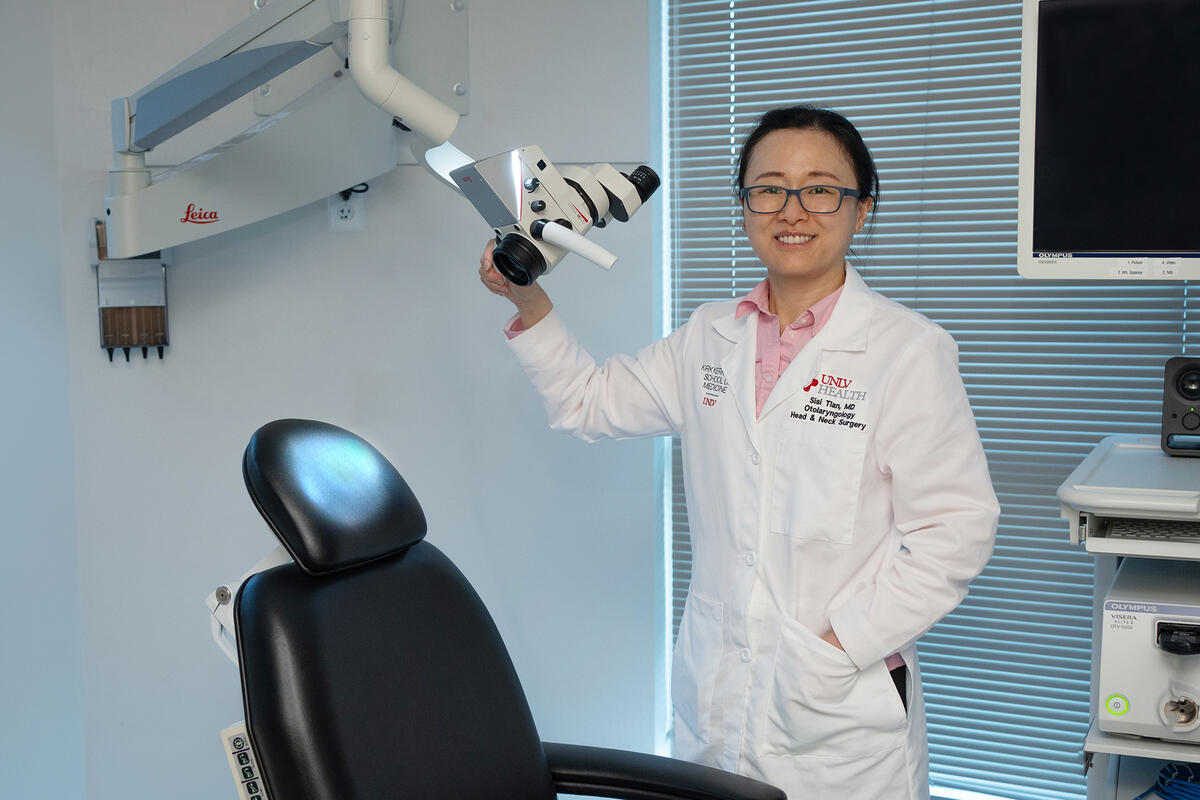Otolaryngology can be a big, intimidating word. Merriam-Webster dictionary defines it as “a medical specialty concerned especially with the ear, nose, and throat and related parts of the head and neck.” But most people are more comfortable with the term "ear, nose, and throat" (ENT).
By either definition, you’d be in good hands with Dr. Sisi Tian.
Tian, born in China, came to the United States when she was 15 years old. She went to high school and college and then attended Loma Linda University School of Medicine where she also completed her otolaryngology–head & neck surgery residency.
She knew early on in her medical training that she wanted to be a surgeon.
“I always wanted a surgery specialty,” says Tian, “because I was noticing that while I was even on my anesthesia rotation, I was peeking over the drape and very interested in what was actually going on inside the surgical field.”
As she worked through her surgery rotation, she “fell in love with ENT because it's a subspecialty in the head and neck. The anatomy is very complex and beautiful and ENT has a lot of variety. So you can do really big surgeries if you want: Cancer resections, reconstructive surgery, sometimes we even go down to the arm, the thighs, the shoulders to take pieces to reconstruct big cancer resections. But also, you can do smaller really finite ear surgeries, laryngology surgeries, and you can do the cosmetic part, facial plastics, and help them with an aging face and neck.”
Dr. Tian continues, “We have pediatric ENT, as well. So it's very diverse. I feel like I didn't have to decide at the beginning what exactly I wanted to do. I had a lot of choices and it's never a dull day for me.”
Upon completion of her residency, Tian moved to Las Vegas and worked as a community general ENT. It was during this time that she saw a huge need for the care of complex head and neck diseases — including cancers of the thyroid and upper aerodigestive tract. She decided to pursue a head & neck surgery oncology-microvascular reconstruction fellowship at Loma Linda University School of Medicine.
Practicing in Loma Linda, California, after completing that fellowship, she received a call from Dr. Robert Wang, professor and chair of the department of otolaryngology-head & neck surgery at the Kirk Kerkorian School of Medicine at UNLV, asking if she’d like to return. Since her parents live in Las Vegas and she had practiced here previously and saw the intense need for this kind of healthcare, it was an easy decision.
“Las Vegas is in a desperate need for physicians,” says Tian. “And, especially for complex head and neck cases and a lot of cancer patients; there's just such a backlog because we don't have enough physicians here. So, I wanted to come here and contribute and be very busy.”
Busy she is. “I saw 26 patients today … on one day, [our practice] can have about 160 patients come through.”
Besides a love of all things ENT, Tian professes another love.
“I love teaching,” she says. “Otherwise, I wouldn't come back to an academic position. It's good to pass down from your experience because it's not just in the books. Every patient is very different; they don't follow the textbook.”
Tian admits that the teaching sometimes goes the other way. “It's also good sometimes to learn from the residents. They have great ideas, too. I think it's a kind of a mutual growth and learning process. So, I like that aspect.”
Ever continuing with growth and learning, Tian is working on meta analysis of rare diseases that she keeps encountering in the clinic. An example of one of these rare diseases is pilomatrix carcinoma, which Tian says can start out as a benign mass turn into a malignant entity.
She admits that she has to “... look at the literature and see what other people have been doing because some of these diseases are so rare that it's hard to have a big database for them.”
Back in the clinic, though, Tian faces the most simple cases to the most complex on a daily basis. And her favorite part is giving her patients “immediate relief and, if it's cancer, and is amenable for a surgical treatment. So you remove the cancer, they may need adjuvant treatments, such as radiation and chemotherapy but, most of the time, they're good, they're cured.
"Or if they have hyperthyroidism, which is a disease that causes increased calcium in the blood, and again, if they're a good surgical candidate, you remove the gland that's causing the problem. And these patients will tell you, ‘My mind just cleared up and now I can think, I can converse with others, and I have energy back.’ So, I love that because you can almost see an immediate change. Immediate relief. That's why I love that surgery.”



